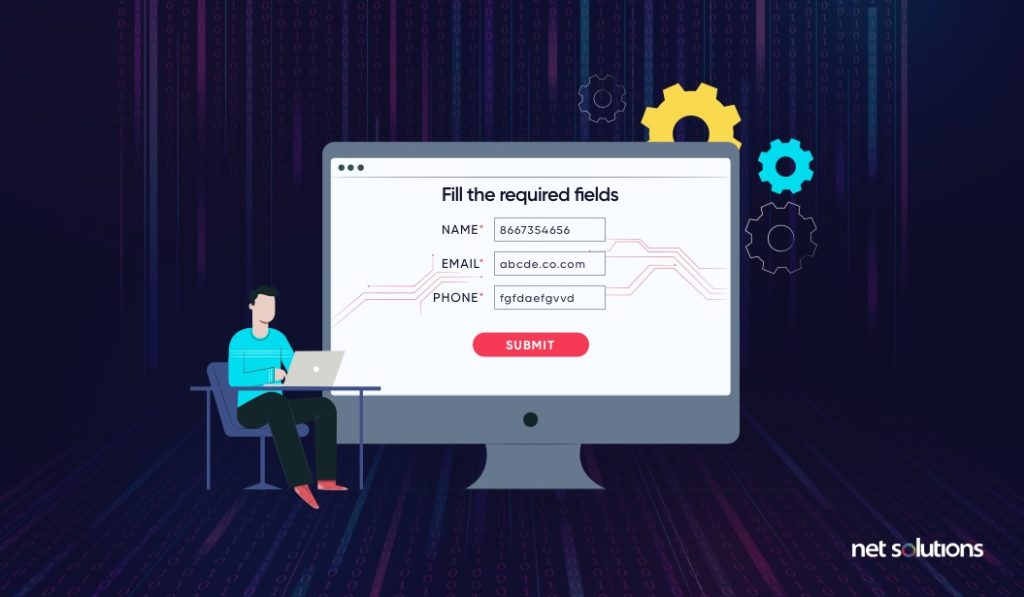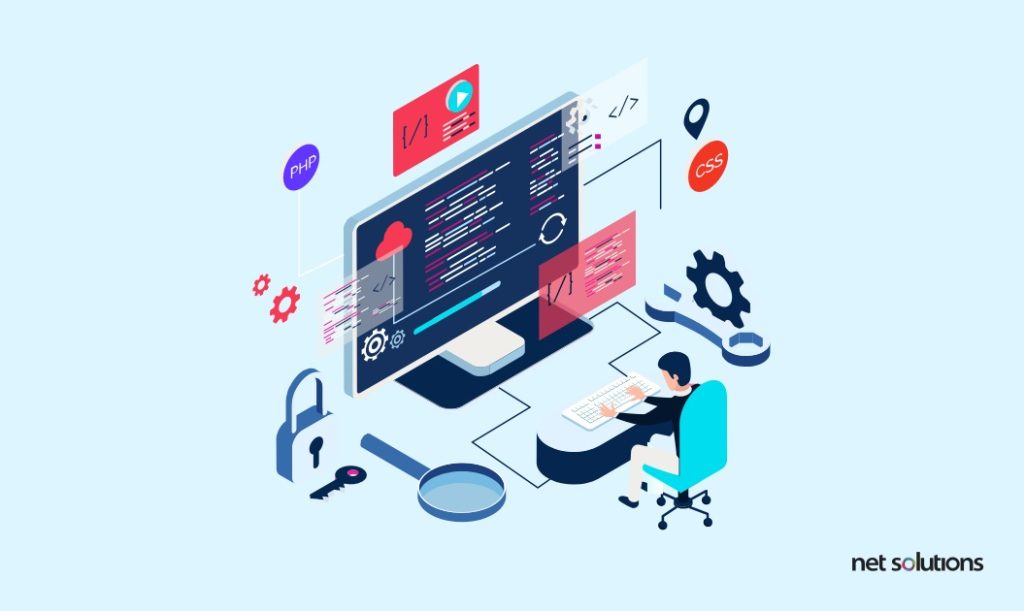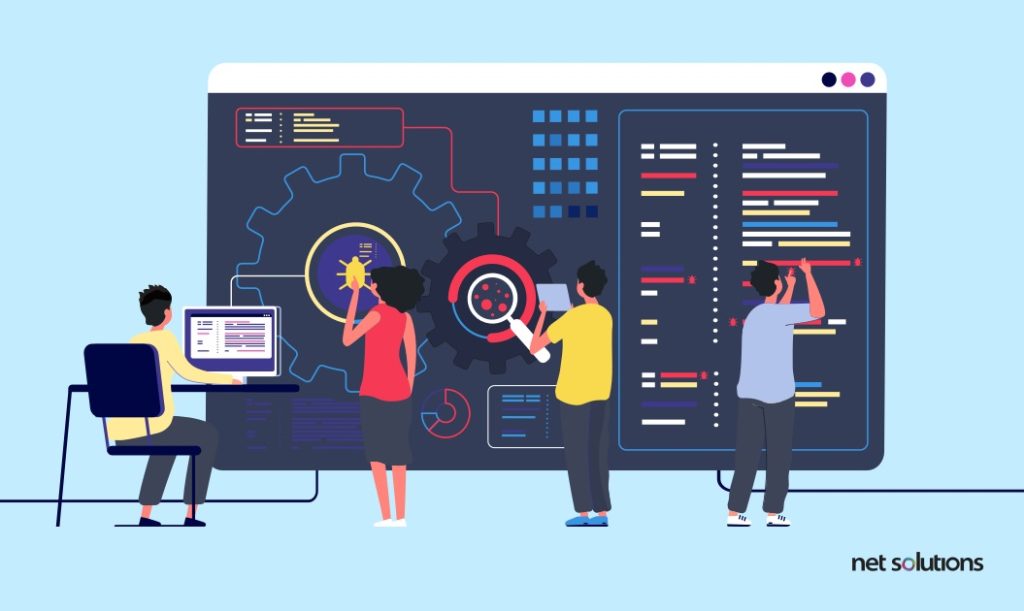Anyone who’s wondering whether quality assurance (QA) is still important when it comes to software development and testing needs only look at recent security breaches and research. As more people work from home, the likelihood of cyber-attacks increases. Software development QA and testing ensure that the root causes of these and other types of vulnerabilities are flushed out before they reach production. Here are some of the best practices to ensure your QA process does its job.
1. Invest in a Secure Testing Environment

While the cloud provides a great space for team collaboration and communication, it’s not ideal for software development and testing. Just as medical scientists need a clean, secure lab for running experiments, developers need a secure local testing laboratory to do theirs. This means the lab needs to be somewhere away from the internet, which has a never-ending list of vulnerabilities.
2. Test Throughout the Life Cycle
Testing throughout the software development life cycle, SDLC, lessens the burden during QA. Some believe that’s the only time to test, but when you test early and often, you’re able to find and fix the errors as you go. Leaving everything until QA puts a heavy burden on your labor force and there’s less chance of putting out the best quality software than if your team tested at every stage.
3. Conduct Smaller Tests
As an extension of testing at every stage, it’s a good idea to conduct smaller tests. Deconstructing prevents budget and resource overloads, which are common jeopardies.
4. Embrace Negative Testing

Positive testing is all about making sure the application can handle itself as expected. While it’s impossible to create test cases for everything, you have a better chance of maximizing coverage if you test for negative or unexpected conditions as well. Negative testing creates a more robust application that has fewer faults rather than making sure everything works under normal conditions.
5. Do Regression Testing
Constantly modifying code to fix one problem can easily lead to another. One of the best practices to embrace, especially when it comes to Agile development, is reusable regression tests. This ensures that the code you added to fix one problem doesn’t cause another. To make the stuff even more effective, it’s a good idea to properly segregate test cases and to also graph the bugs, so it’s easier to identify problem spots.
6. Write Tests Beforehand and Don’t Let Programmers Do It
Known as test-driven development, running tests beforehand has a few benefits, including saving time by correcting failures before putting down new code. It also bypasses code duplication, which is another time thief. For the best results, don’t let the programmers write tests against their own code. While this looks like the most convenient solution, it introduces the kind of bias that can stymie progress. This move also lacks creativity and the ability to challenge the code in a way that pushes it to become better.
7. Document Observations for Reports
Whether tests are manual or automated, notes and observations taken of all activity removes ambiguity. They also provide great training material and a solid basis for configuration documents and manuals.
8. Clean the Code

Cleaning code means putting the house in order. For example, making code as concise as possible means it’s easier for another developer to follow when it comes to future testing. Code simplicity also means easier maintenance.
9. Test Away From Developers and Designers
MVC, or model-view-controller, is a software design paradigm that facilitates collaboration between developers and designers, leading to constant changes. Because testing an application in this development environment is too challenging, isolating the application from these continual changes for a specific time makes sense. It relieves potential confusion and makes the process more complete.
10. Build a Targeting Operating Model
A targeting operating model is a flexible framework that provides developers with ways to run their workflows as well as track progress. Defining these processes, methods and tools beforehand make the goals clear to all team members, unifying everyone behind the common goal. It also helps new team members integrate and understand product objectives from the start.
11. Separate Security and Performance

Application security versus performance testing requires two different skill sets. While they are related, security testing is all about loopholes and vulnerabilities, which involve simulating attacks and ethical hacking. Testing performance is all about benchmarking application behavior. Separating these teams avoids diluting each team member’s specialization and keeps everyone sharp.
12. Talk to End Users
Taking the time to meet with end users gives your development project better context. You’ll understand the issues they face and the features they need to improve productivity. When it’s time to test during production, it’s easier to simulate from the user’s perspective. Whether it’s internal or external, talking with your end users is always a good idea.
13. Tackle Significant Code Changes First
When it comes to fixing bugs, focus on the areas that are heavily used by the end users. These are the significant code changes that need the most attention.
14. Leverage Sanity Testing

Sanity testing is a detailed procedure that targets more topical features. As a surface-level subset of regression testing, sanity testing occurs when you don’t have enough time for a full regression test. It ensures that everything is working as expected, making it ideal for minor bug fixes. While this seems like a shallow exercise for some, it’s meant to save time and takes little effort. To make it more useful, try using a two-tier approach, where you do quick sanity checks daily and offer developers immediate feedback. Then at night, you run a deeper automated regression test for better context.
15. Use Both In-House and Outsourced Teams
Gathering an in-house dream team of testers that fulfills all requirements is not always possible, because it takes a level of infrastructure investment many aren’t able to make. For the sake of budgeting, many companies rely solely on outsourced QA teams. To get the best results, it’s a good idea to compromise with the two. Just like it’s a good idea to speak to end users, it’s a good idea to use both in-house and outsourced teams, because they can provide better understanding of the consumer markets, especially if you’re dealing with offshore testing teams. Think of this mix as getting the best of both worlds.
16. Achieve Better Control with Component-Based Architecture
When you have multiple stakeholders with different expectations in addition to their own ways of looking at the project, the best way to manage all of that is by embracing component-based architecture. This is a type of architecture that breaks down the product into logical or functional components, allowing project managers to better isolate different dependencies. It also supports component reusability. Component-based architecture is one of the best ways to manage your development iterations.
17. Embrace Diverse Testing Strategies

Diversity in testing strategy helps you quickly identify the different kinds of bugs that can bring you headaches down the line. While sanity and regression testing are two valuable types, there are a few more to consider:
- Smoke testing makes sure the software is stable and doesn’t go up in flames after the initial pass
- Black Box testing assesses functionality without going into the inner workings of the application
- White Box tests the internal structures of the application but not the functionality
Of course there are many more testing procedure types, but the idea is to find the right combinations that fit into your process, so that your product is in full compliance with the business objectives.
Having a solid QA and testing strategy means teams struggle less with finishing testing or even triaging defects. Net Solutions is a leading provider of Agile software development services to create robust apps that suit your brand’s needs. Contact us to see what our team can do for yours.





